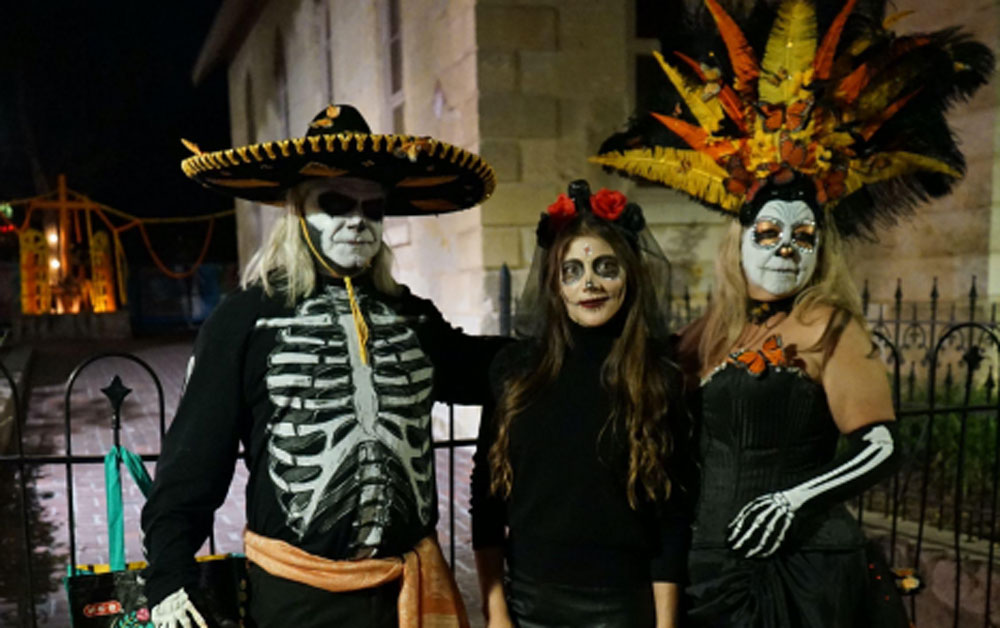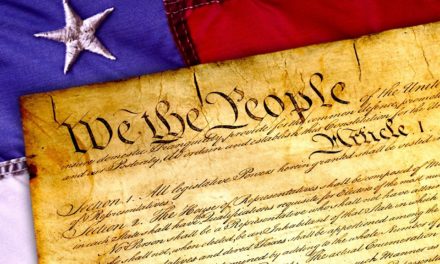The Mexican holiday known as Dia de Los Muertos, or Day of the Dead, falls on November 1 and 2. The two-day celebration of the lives of the deceased is believed to have Aztec origins dating back to the 14th century, perhaps even centuries before that. The Aztec Queen Mictecacihuatl ruled over the underworld and served as a protector of the dead. Annually Mictecacihuatl returned to grave sites to make certain that the bones of the deceased were protected.
The Aztec Queen’s visit was celebrated with ofrendas [home altars], dances, and preparation of special foods such as pan de muerto or atole [corn cereal]. On those celebratory days, the dead were thought to be awakened from their eternal sleep by the presence of family and friends, and the scent of food and flowers. Music and candles also contribute to the awakening.
I grew up in San Antonio in an extended family that included 38 Romos in a two block section on the Westside of town. While my four grandparents were all born in Mexico, they did not bring the Dia de los Muertos tradition to Texas when they crossed the border. As I wondered why this was the case, I found a good explanation in the words of Los Angeles Times writer Fidel Martinez. In a recent essay on this topic, Martinez wrote: “Like many Mexican American families, we held on to some Mexican holiday traditions — tamales at Christmas, buñuelos at New Year’s…But Día de Muertos? Not in our house. I think we were too assimilated — too citified in the L.A. suburbs — to appreciate the Indigenous worldview that accompanies the day.” That may explain my late appreciation of this colorful holiday.
My personal introduction to Dia de Los Muertos occurred in the 1970s as I began to cultivate an interest in Mexican and Chicano art. From my graduate anthropology courses at UCLA, I learned that Aztec art and artifacts suggested that their Nahualt-speaking ancestors may have practiced celebrations of the dead in the centuries before migrating to the interior of Mexico where they founded the Aztec capital. The Spanish
conquistadors who arrived in the Aztec capital in 1519 found evidence of art and sculptures demonstrating that the Aztecs believed in the underworld and that ancestral gods ruled in that world.
Mexican art, which I began learning about in the early 1970s, provided me with the ideal visual interpretation of what Day of the Dead meant to the Aztec people. The great Mexican illustrator and lithographer Guadalupe Posada [1852-1913] is credited with the popularization of imagery once employed by the Aztecs to convey deceased persons. His drawings of calacas and calaveras [skeletons and skulls] were popularized in the penny press and later incorporated into murals by acclaimed Mexican painter Diego Rivera.
My wife and I lived in Los Angeles in the 1970s and witnessed the rise of Self Help Graphics, an East L.A. community art organization founded by Sister Karen Boccalero, a Catholic nun. Sister Karen, as she was known, worked with the youth of East L.A. helping young artists find meaningful life experiences and purpose through their artistic creations. Trained as an art printer, Sister Karen purchased serigraphic printing equipment and invited East L.A. artists to participate in an art collective with goals of producing high quality edition prints to sell.
Before the introduction of Day of Dead events at the Self Help art complex, East L.A. residents knew little of the colorful ceremonies associated with this special day. Sister Karen’s support of the introduction of Day of the Dead activities led to the event’s rise as a signature event of the non-profit organization. I visited Self Help several years ago as they were preparing for the Day of the Dead parade that has been known to attract more than 10,000 participants. This year marks Self Help’s 48th anniversary. Information about their events can be found at the Self Help Graphics’ website under 48th Annual Día de los Muertos Celebration.
Several years ago before the release of Coco, Disney’s popular film on this topic, a James Bond movie, Spectre, opened with an elaborate Day of the Dead parade through downtown Mexico City. Mexico City officials decided that the celebration with a parade was indeed a good idea. Oscar Lopez, a journalist with the New York Times, noted on October 30, 2021, “The parade has since become an important tourist attraction for the capital, with 2.6 million attending in 2019.”
Although Lopez documented that U.S. cities with large Mexican American populations “like Los Angeles, Chicago and San Antonio also hold celebrations,” Mexico honors the more traditional Day of the Dead events. Several years ago my wife Harriett and I were fortunate to visit Oaxaca, Mexico to observe and learn about the famous multi-day holiday. We visited the city’s main cemetery where we witnessed the Day of the Dead visitations of families to the grave sites of their beloved. Each grave site was colorfully decorated with the presence of altars or ofrendas and an abundance of candy sugar skulls, pulque, candles, marigold flowers, and even a glass of water to quench the thirst of the deceased. Candles, which signify fire, represent an essential light to guide the dead home.
Although the Aztec celebration has become more recognized and appreciated for its connections with deceased loved ones, the tradition has experienced transformations. As social media introduced this Indigeneous celebration to global audiences, more U.S. cities with large Latino populations have added Day of the Dead celebrations to their annual calendars. Local community groups incorporate adaptations of this cultural
legacy to reflect links to Indigeneous roots as well as contemporary experiences.
Day of The Dead Comes Alive in San Antonio












